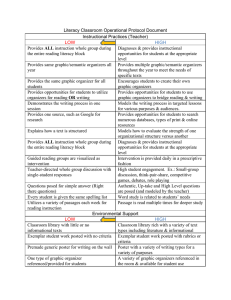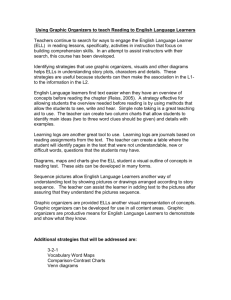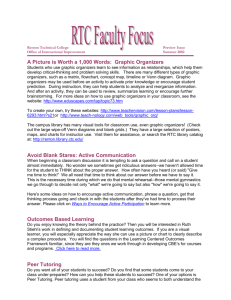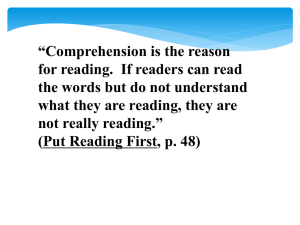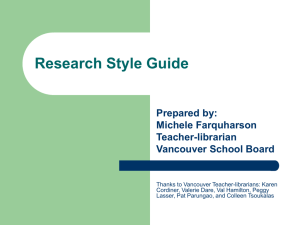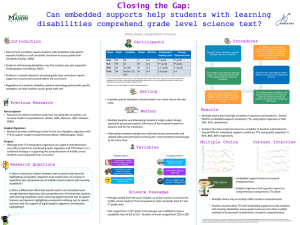high school language intervention strategies for teachers
advertisement
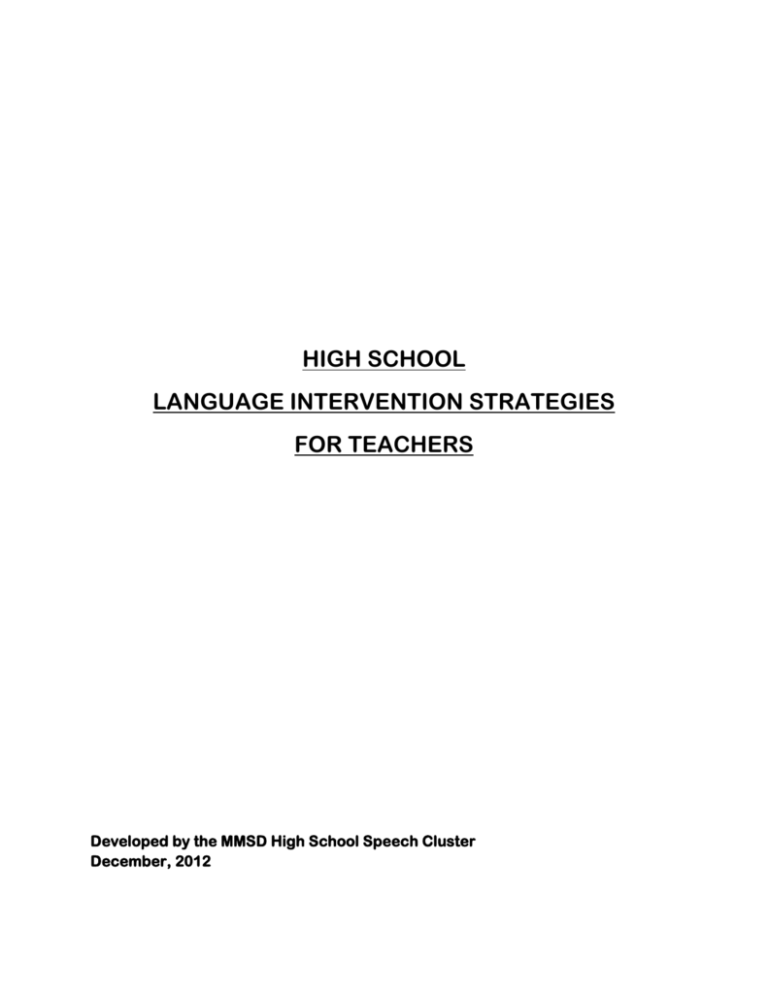
HIGH SCHOOL LANGUAGE INTERVENTION STRATEGIES FOR TEACHERS Developed by the MMSD High School Speech Cluster December, 2012 Speech and Language Strategies Academic Vocabulary These strategies are intended for students for whom you have concerns with Academic Vocabulary. These strategies are beneficial for all children in supporting their communication skills. Academic Vocabulary: Foreshadow and frontload key vocabulary for each unit or novel. o Prior to introducing new units or novels, compile a list of key vocabulary words. Discuss the words and possible meanings. o Graphic organizers are a good way to identify words relationships, identify the part of speech, include a visual, provide a definition, and practice correct usage. See two attachments for examples of graphic organizers: Weekly Vocabulary Words from the East High School freshmen English team, and SLP Vocabulary Form from Current Best Strategies to Help Speech-Language Pathologists Better Meet Student Needs grades K12. Practice using new vocabulary in context. o Provide examples, written and oral, of correct and incorrect usage. Have students generate their own examples of correct usage. o Students can do this with a peer. o Put up a word wall in the classroom with examples of the words in sentences. Provide visuals for each new word. o The visuals can be found in Google Images and shared with the class via smartboard o The visuals can embedded in a Word table and distributed as handouts for each unit Each word can be cut out and used as a flashcard with definition on back o Accurate visuals can be difficult to find for abstract terms. In this case, the visual can be paired with anecdotes or examples the student can relate to. Speech and Language Strategies Functional Vocabulary These strategies are intended for students for whom you have concerns with Functional Vocabulary. These strategies are beneficial for all children in supporting their communication skills. Functional Vocabulary for General Curriculum Define Functional Vocabulary: words that are found across disciplines, occur frequently, and are critical for learning. o Provide visuals, graphic organizers, and concrete examples to supplement definitions. These terms are often abstract, even after discussion. o Provide examples of functional vocabulary: analyze, convey, expository, etc…see attachments: Academic Vocabulary Nouns and Academic Vocabulary Verbs for a more comprehensive list and for a graphic organizer to learn definitions and examples. Students can use the graphic organizers mentioned above and in Academic Vocabulary: Foreshadow Key Vocabulary to learn functional vocabulary. Functional vocabulary may need to be reworded and/or simplified. Take examples from texts and lectures, and use synonyms for some terms. If a student is to do some expository writing, reword it to say that the student will be sharing facts, and not making up a story. Speech and Language Strategies Listening Comprehension These strategies are intended for students for whom you have concerns with Listening Comprehension. These strategies are beneficial for all children in supporting their communication skills. Listening Comprehension Allow students wait time of 30 seconds before asking them to respond. o The student first needs time to process the question and then time to formulate a response. o A teacher may tell a student “I’ll come back to you” (and follow through) to avoid focusing the spotlight on a student during whole class discussion. Have students repeat information in their own words o Do not ask if they understand (the student will say “yes”) o They can paraphrase in pairs or small groups as well as in front of the whole class o Students can write an “exit” slip to demonstrate with they understand that day o Students have write answers to questions on paper or dry erase boards and hold it up. Everyone participates, and everyone has some think time. o KWL (What I Know, Want to Know, and Learned) charts o Put up a list of 25-30 questions (at least one for each student) on board before teaching the lesson about that day’s material. Some are easy, some are more difficult. Students see ahead of time what they are expected to know, everyone is responsible for answering at least one question to show understanding of material, and students choose which question they want to answer. Provide graphic organizers (webs, templates) for notetaking o Writing notes on blank sheets is difficult for some. Starting with a template would teach students a format. Power Point slides with room for additional notes are very helpful. o Cornell Notes are becoming an increasingly popular way to take notes. Students would benefit from a structured series of lessons on how to take Cornell Notes in order to be successful. o Students would also benefit from someone else’s complete notes As a model that they can use for comparison To learn material that they were absent for Another student in the class can receive extra credit for providing notes Keep a set of daily notes in a classroom binder


